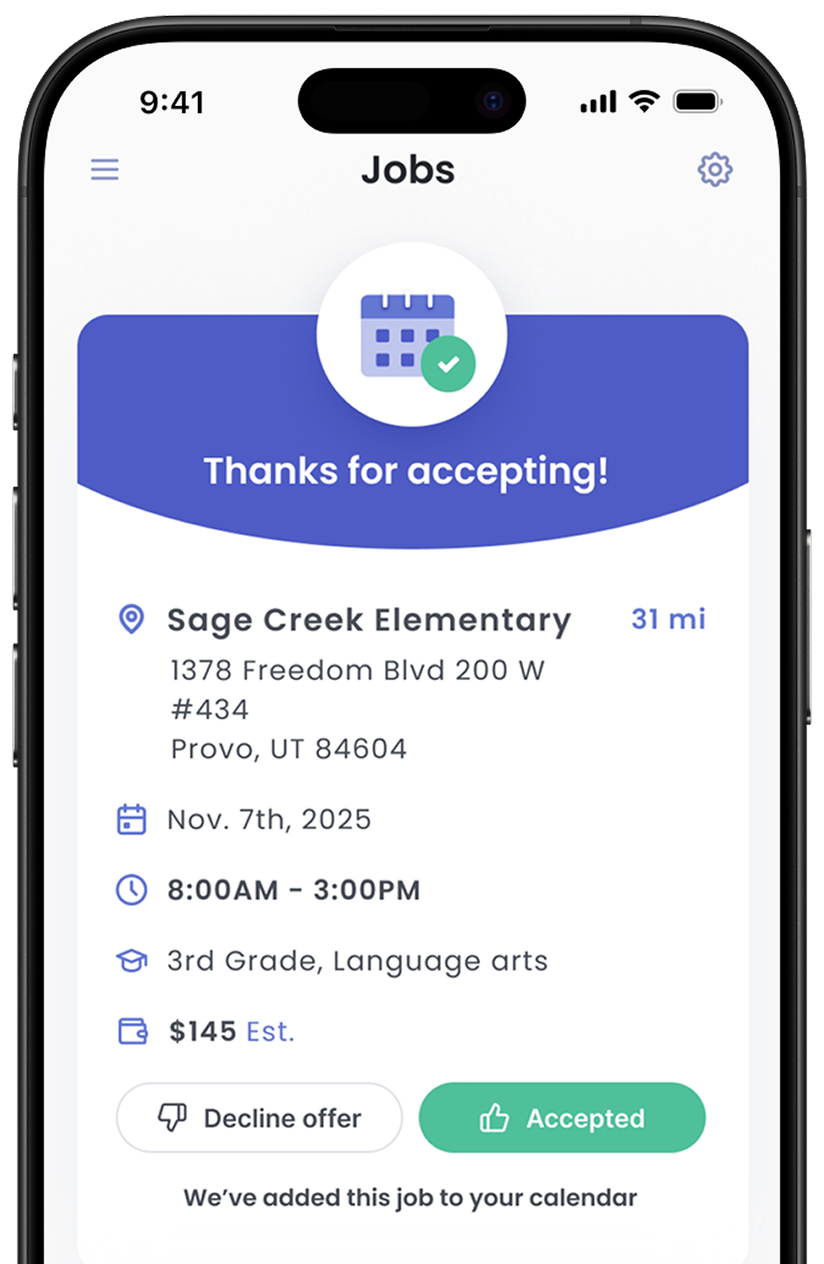The McKinney-Vento Homeless Assistance Act
First enacted in 1987 and reauthorized most recently in 2015, this federal legislation includes many specific education protections for students experiencing homelessness.
As a substitute, it is important to understand the prevalence of student homelessness, how it affects learning, and how schools support students in these circumstances. It is also important to understand because educators need to report suspected student homelessness to a school counselor or administrator.
Substitutes shouldn't ask students to share personal details about their home lives, but students (especially young students) may share things while participating in class, or you may overhear them mention things when talking with peers or on the playground. In the next section, learn how student homelessness is defined so that you are prepared to report students who may need school supports.
Defining Student Homelessness
In McKinney-Vento, "homeless children and youths" is defined as "individuals who lack a fixed, regular, and adequate nighttime residence" and includes
- "children and youths who are sharing the housing of other persons due to loss of housing, economic hardship, or a similar reason; are living in motels, hotels, trailer parks, or camping grounds due to the lack of alternative adequate accommodations; are living in emergency or transitional shelters; or are abandoned in hospitals"
- "children and youths who have a primary nighttime residence that is a public or private place not designed for or ordinarily used as a regular sleeping accommodation for human beings"
- "children and youths who are living in cars, parks, public spaces, abandoned buildings, substandard housing, bus or train stations, or similar settings"
- "migratory children"
(42 USC Chapter 119, Subchapter VI, Part B, §11434a. Definitions)
As this definition makes clear, student homelessness is more than simply families "living on the streets" (although some do experience this); it covers a broad range of adverse living arrangements.
Prevalence of Student Homelessness
According to the U.S. Department of Education, total homeless student enrollment was over 1,205,000 children and youth (school year 2021-2022). This number is likely low as many cases go unreported.

With the struggling economy and the unprecedented immigration of the last few years, it is estimated that homeless student numbers have increased significantly.
In other words, there is a good chance that some of the students that you work with as a substitute are experiencing homelessness in some form.
Effects on Learning
Homelessness has very obvious detrimental effects on student learning. At a most basic level, difficult or fluid living arrangements may cause anxiety, anger, sadness, and fear. These students may have difficulty paying attention, participating, or expressing their feelings appropriately.
On top of that, homeless students may experience a host of related difficulties, such as
- food insecurity
- lack of sleep
- lack of access to personal hygiene needs
- lack of school supplies
- lack of parental support
- parent mental health issues
- trauma from unhealthy or harmful living arrangements
- stigma, bullying at school
- caretaking of younger siblings
- chronic absences
- frequent change in where they attend school
It is easy to understand why students experiencing homelessness may struggle with learning. Although school can be a welcome place of safety and routine for these students, it can also be far from seeming important in the big picture of things going on in their lives.
Education Rights around Student Homelessness
McKinney-Vento gives homeless students the following rights:
- Right to immediate school enrollment even when records not present
- Right to remain in the school of origin, if in the student’s best interest
- Right to receive transportation to and from the school of origin
- Right to receive support for academic success
Schools must provide these rights by law, and special funding is allocated through McKinney-Vento to meet these needs.
Conclusion: What Can I Do?
As a substitute, you usually don't know much about students' backgrounds and home lives, but it is helpful to keep in mind that there are often unseen challenges that they are dealing with. If a student shares (or you overhear) information related to irregular living arrangements, you can feel prepared to get support by reporting it to a school counselor or administrator.
Outside of that, you won't likely know if a student's struggles are related to homelessness. However, the same classroom management strategies that you use with other struggling students apply for students who are dealing with home life issues—keeping a positive classroom environment, inviting everyone to meet expectations, being patient with student challenges, using praise to reinforce expectations, and seeking support from school staff for any issues that escalate.
.png)




